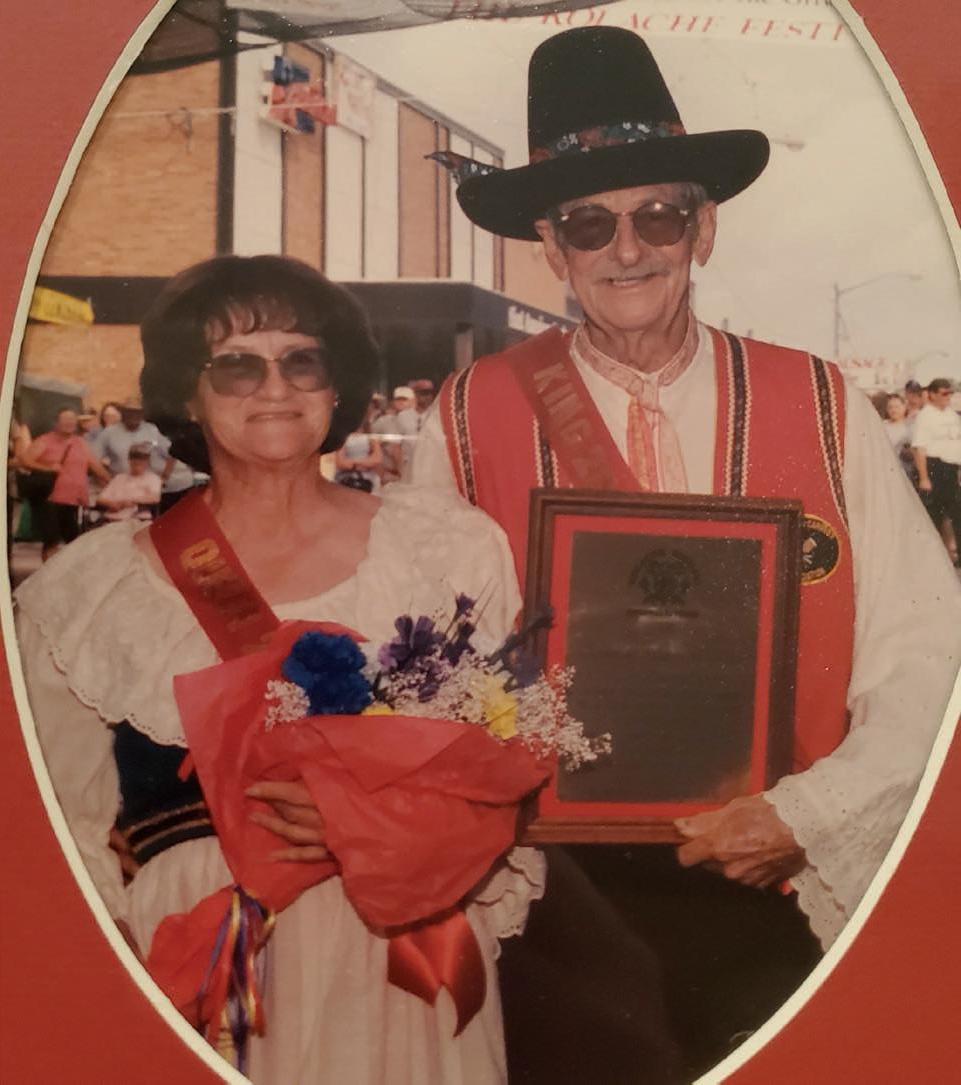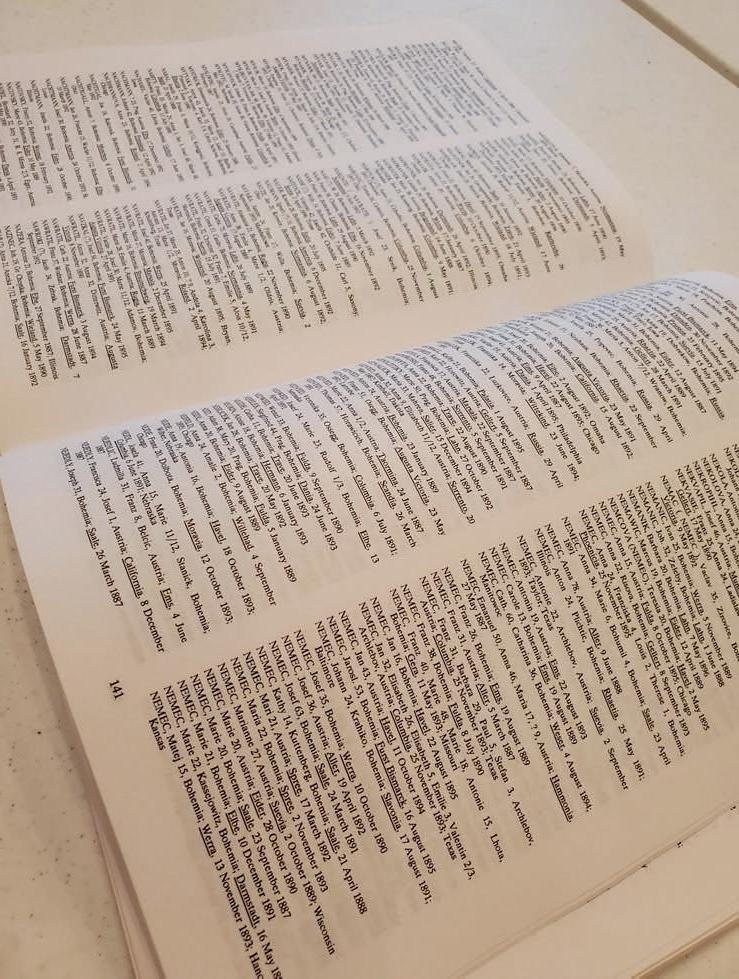
4 minute read
BURLESON COUNTY CZECH HERITAGE MUSEUM - See how
CZECH HISTORY
the collection it is today.”
The house that the museum resides in was built in 1863 and donated by the Polasek family in 1993. It was the dream of George Hlavinka to restore the historic house and, aided by Anton Haisler, was completed two and a half years later. Together with the Carriage House, adjacent to the home, the Burleson County Czech Heritage Museum is able to display not only household items but also historical pictures, ship manifests, examples of Czech currency, maps of Prague, paintings, handmade pieces of art, dolls and children’s toys, and period clothing.
“One of my favorite items is the dulcimer,” added Birdie Kristoff, secretary of the museum board. “They are nice instruments and I enjoy hearing them played. There was a visitor that was able to play a little bit on it one time.”
“The printed fabric is a favorite of mine,” added Dorman Pullin, president. “It was made with something similar to a stamp pad. After taking regular cloth, they dyed it a certain color and then stamped the pattern on. Can you imagine sitting down and trying to have the patience to do something like that?”
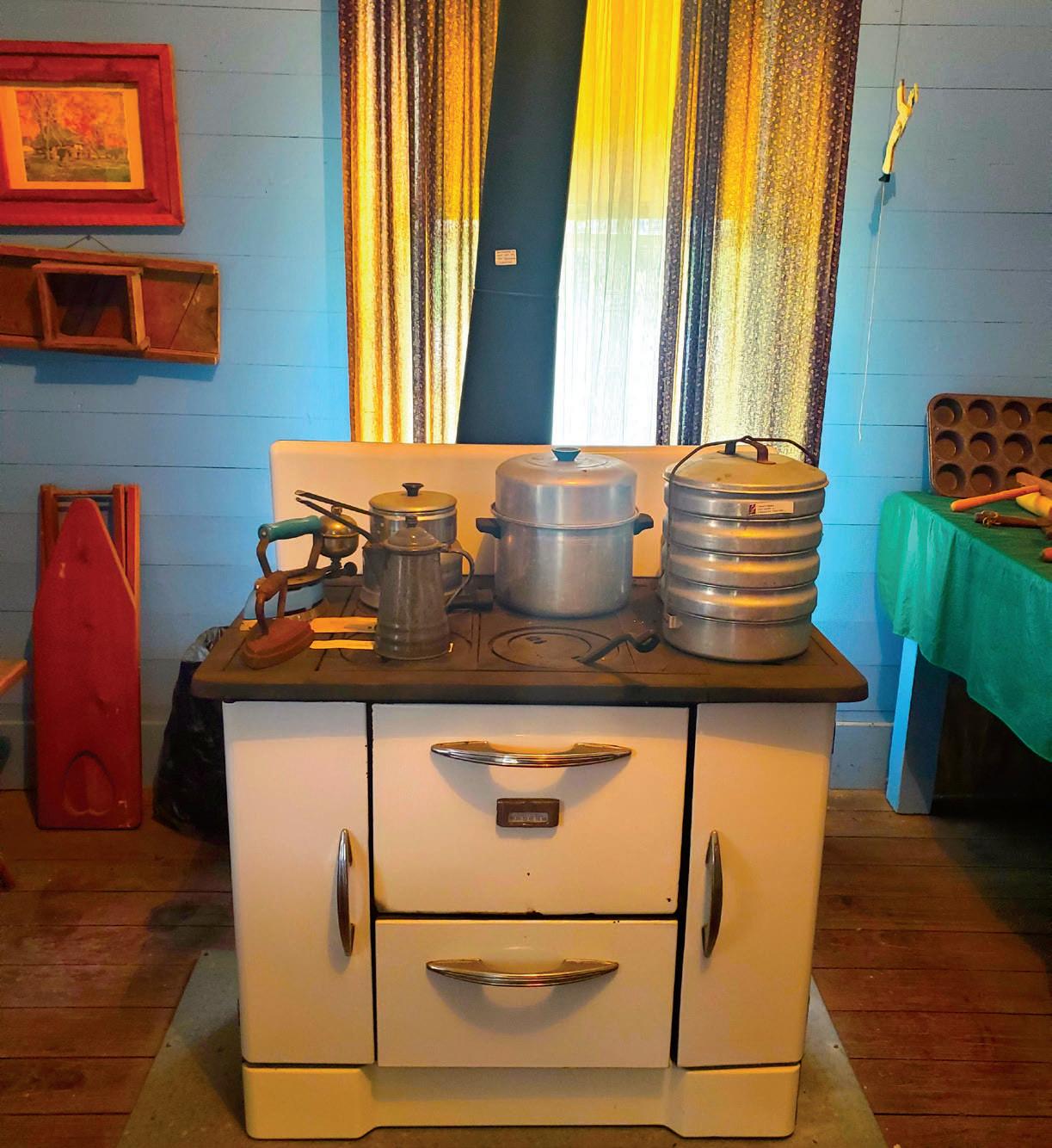
Charter members of the Burleson County Czech Heritage Museum included Helen Jurica, Margaret Polansky, Daniel Junek, George and Shirley Hlavinka, Bennie and Annie Polasek, Grace Skrivanek, Bernard Rychlik, and Robert and Johanna Elliott.
Today, the Burleson County Czech Heritage Museum members continue the hard work of maintaining the museum grounds, giving out an annual scholarship to the Queen of the Kolache Festival, and teaching the cultural heritage of the Czech people to anyone who will listen, and with a good reason.
“We need to pass on the sacrifices,” said Dorman. “The sacri-
Continued on page 20
Top, this well is an example of how early Czech residents obtained water for their homes; middle, an old wood burning stove is on display in the kitchen; bottom, ship manifests allow visitors a way to find their ancestor’s travel log.
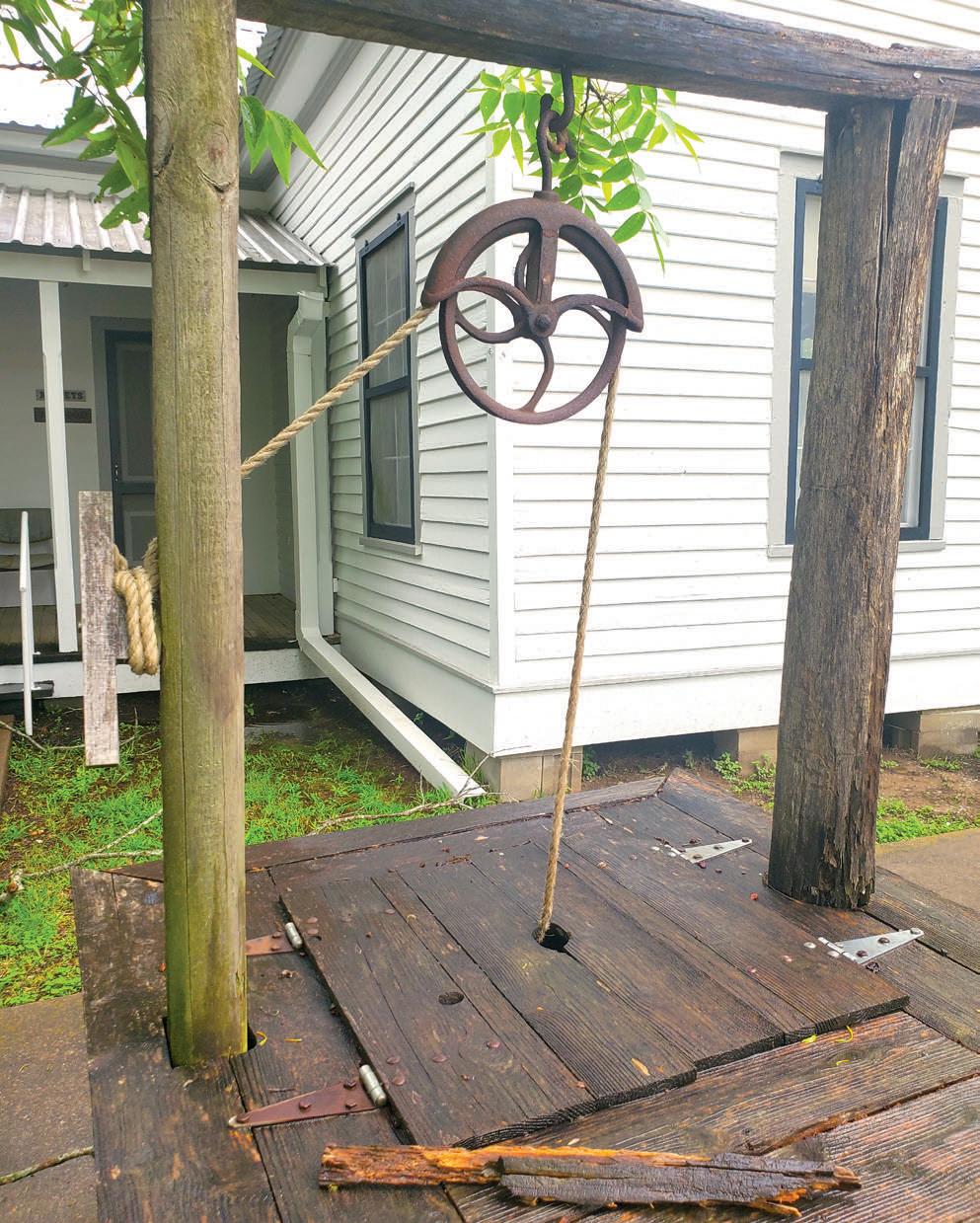
CZECH HISTORY
fices that our ancestors made for us to be sitting here today. I think about what it was like for them to leave their country, their home, and go to a new world. They sacrificed a lot to leave and come here to a big question mark. I enjoy it when the young people come here and see what life was like for our early settlers. There was no running water in the house. Instead, folks had to drop a bucket into a well and haul their water inside. Children had to get up early and help in the barn. Cows had to be milked, you had to bring in eggs. I remember my own mother out in the field with us, picking cotton. It wasn’t easy. I also want them to understand what family was like back then. The family values, you know. When you sat around the table for a meal and your family was there. Someone’s extended family may be within only 30 or 40 miles.”
To maintain the museum and her heritage, volunteers are vital. Please consider becoming a member of the Burleson County Czech Heritage Museum by calling President Dorman Pullin at 979-5674021.
The Burleson County Czech Heritage Museum is located at 200 East Fawn Street, at the corner of Shaw and Fawn Street, just two blocks off the Presidential corridor. The museum is open by appointment only. Visitors may call the Burleson County Chamber of Commerce to book a tour, 979-567-0000.
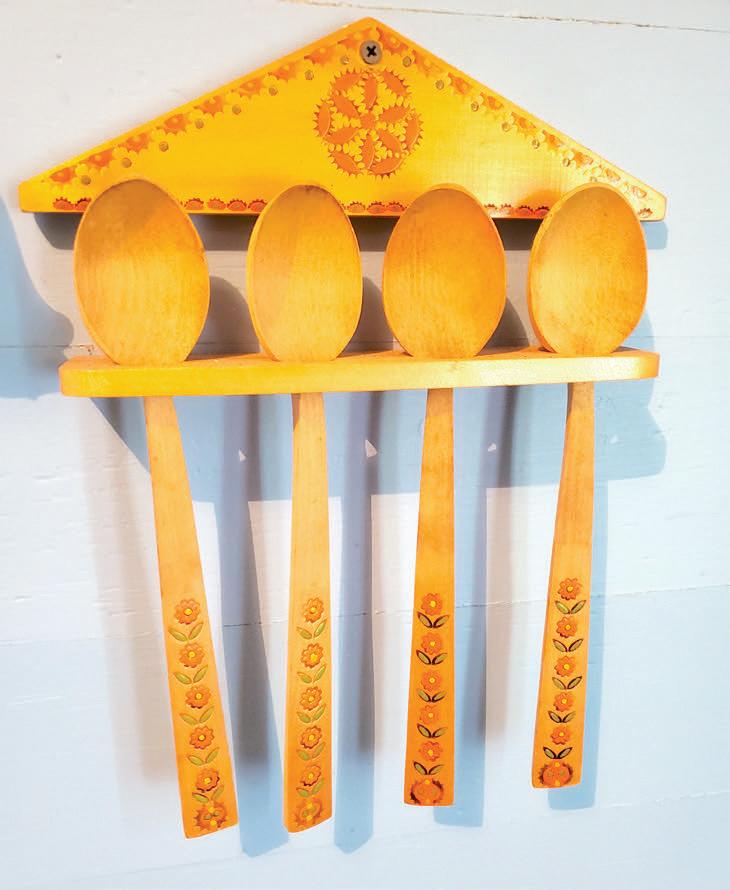
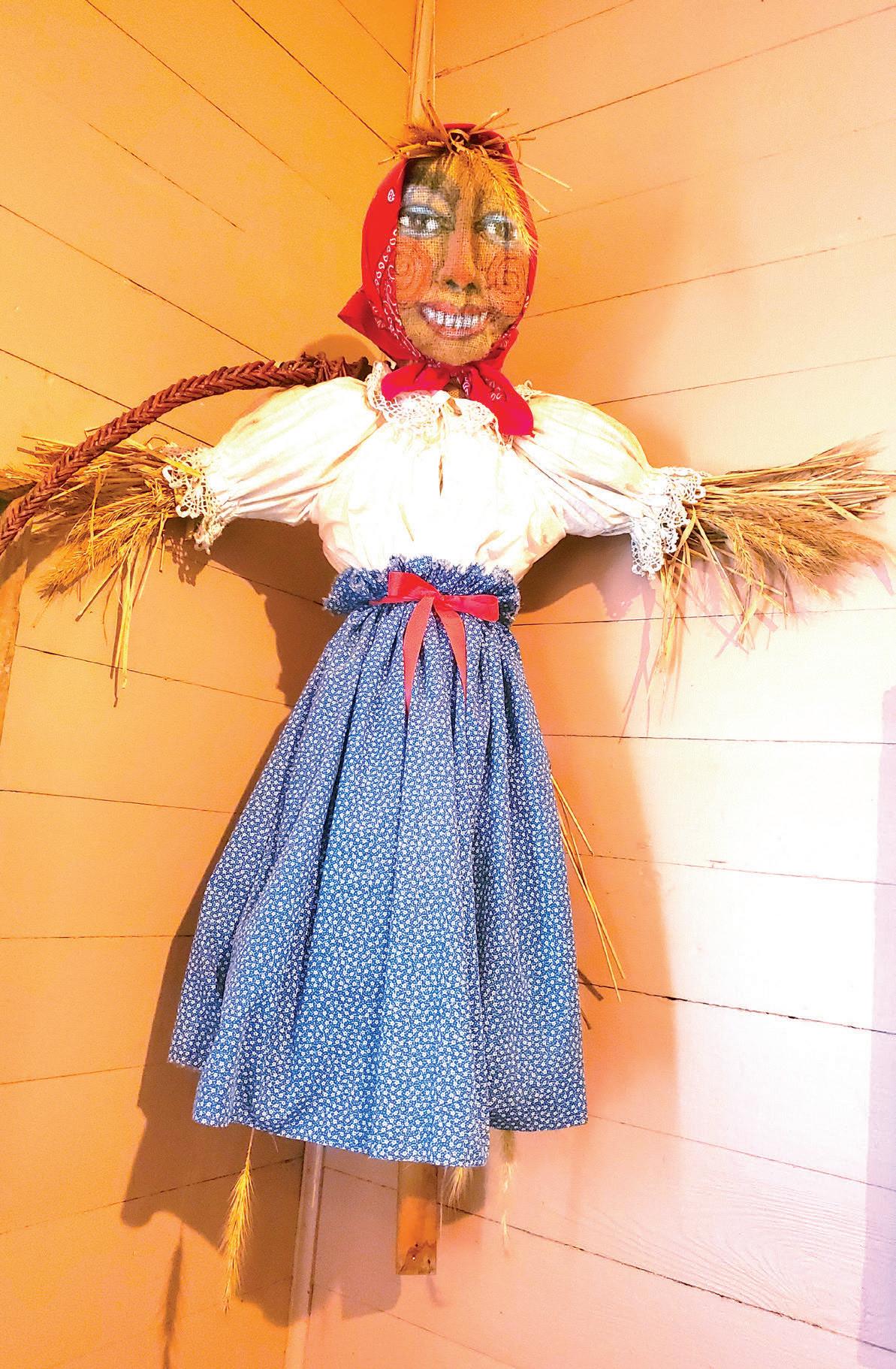
Top, to celebrate the end of the winter, young girls in a number of villages would build an effigy of a woman out of straw and branches, and dress the figure in old clothes. The woman represents a Slavic goddess of winter and is associated with death. Therefore, her destruction symbolizes the beginning of new life in spring. After taking the figure out of the village in a solemn procession, Morana is set on fire and then thrown into the water by singing girls; bottom, these spoons on display in the kitchen of the museum are a good example of the artistic abilities of the Czech people and their desire to decorate everything, even everyday items. Bottom oval, Shirley and George Hlavinka were named Queen and King of the Kolache Festival in 2001. The photo of this couple, as well as couples from other years, are on display in the Carriage House adjacent to the museum.
